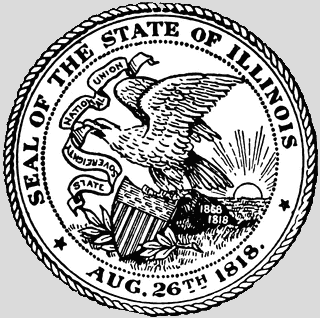 |
The 33rd Infantry Division was the only distinctly Illinois division that saw active service in France. Activated on July 1917 as a National Guard Division from Illinois at Camp Logan, Illinois, it began operations in France in May, 1918. The Division fought in Le Hamel, the Meuse-Argonne Offensive, the Somme offensive, and at St. Mihiel. Losses to the Division were high: 691 killed in action, 6,173 wounded in action. After the end of hostilities, it returned to Illinois, and was deactivated on May, 1919, at Camp Grant in Rockford. |
 |
The 84th Infantry Division was comprised of personnel from Illinois, Wisconsin, and Kentucky. It was formed in 1917, and formally activated in August, 1917. It was deployed to France in October 1918 to serve as a training formation for replacements which would be sent to the Western Front. At the war's end, the formation was recalled home and, without having seen combat actions, and was inactivated in January 1919. |
 |
The 86th Infantry Division saw no combat in World War I. It was activated August, 25 1917 at Camp Grant in Rockford. It went overseas in August 1918, returned to the United States in November 1918, and was deactivated in January 1919. Individual units within the Division, particularly the 171st Infantry Brigade and 172nd Infantry Brigade, were used to reinforce or replenish frontline units. |
 |
The 88th Infantry Division was comprised of personnel from Iowa, Minnesota, the Dakotas, and Illlinois. It was formed at Camp Dodge, Iowa on August 5, 1917. It shipped overseas on September 7, 1918. While it never participated as a Division, soldiers from its ranks were used to reinforce or replenish frontline units. It lost 12 soldiers killed in action, and 66 wounded in action. It was inactivated on June 10, 1919 at Camp Dodge, Iowa. |
 |
The 370th Infantry Division. The 8th Infantry Regiment was founded in the 1870s as an all-black unit commanded entirely by black officers. At the outbreak of the war, it was re-designated the 370th Infantry Regiment. The segregated U.S. Army did not want to fight alongside African-American soldiers, so General Pershing attached them to the French Army. They fought with distinction, earning a number of battle commendations. After the war, some of the soldiers in the 370th and the 369th (the Harlem Hellfighters) chose to avoid widespread discrimination at home and remain in France. Legendarily, the musicians of these units brought jazz music to Europe.
Many soldiers of the 8th lived in the Bronzeville neighborhood in Chicago. To commemorate their service, sculptor Leonard Crunelle created the Victory Monument in 1927. It is located in the Bronzeville neighborhood in Chicago at 35th Street and King Drive. |





